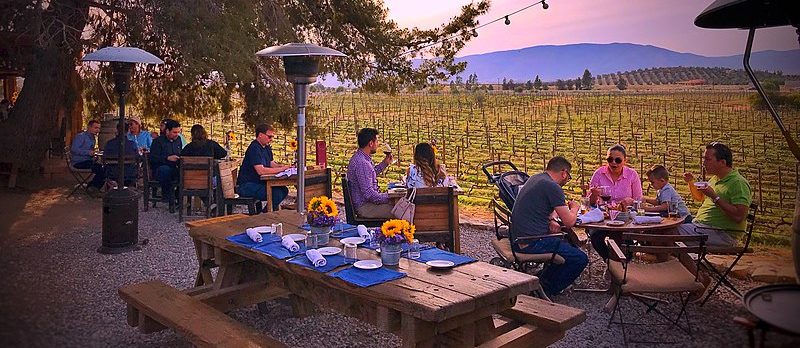
Baja California wine country rejoices in rustic restaurants, where unpretentious menus let local produce shine.
The valleys where much of Mexico’s finest wine is produced are very much their own thing. The region isn’t spectacular in that verdant Loire Valley kind of way, and there’s nothing colonial nor Aztec. But this is Mexico, with all its lovable, funky imperfection. There’s beauty in the craggy mountains dotted with spiky cacti.
Most of the country’s grapes are grown in Valle de San Vincente and Valle de Ojos Negro, but the Valle de Guadalupe region — a patchwork of vineyards, orchards and organic gardens — is also home to a number of major wineries, such as Bodegas de Santo Tomás, founded in 1888. The industry has exploded since the 1990s and today there are more than 75 bodegas (wine cellars) in the valley; superb vintages can be sampled at wineries designed by cutting-edge architecture firms.
I visit Ensenada, a low-key fishing town just over an hour’s drive from the US border. It’s the jumping-off point for an eating and drinking tour encompassing everything from street food stands to the valley’s fine dining restaurants. At the bustling Mercado Negro in downtown Ensenada, I soak up the market’s atmosphere. Just up the street, Don Fidel has set up his little cart almost every day for more than 30 years. He serves nothing but giant pismo clams, opened to order, chopped and lightly dressed with lime and hot sauce.
Fish tacos are Ensenada’s specialty. Hand-cut strips of cazón (a type of small shark) are dipped in a lightly spiced flour batter and deep-fried, then garnished with salsas, pico de gallo (chopped tomato, chilli and onion), a sour cream-mayo mix and shredded cabbage. Tacos Fenix, on the corner of Juarez and Espinosa, claims to have invented fish tacos, although I’d take that with a grain of salt. La Guerrerense, meanwhile, is a busy stand that’s been offering the freshest seafood since 1960.
Half an hour’s drive from Ensenada, chef Javier Plascencia’s Finca Altozano is one of the region’s most popular restaurants. I sit under the thatched roof, surveying the burgeoning vines as I feast on chef Plascencia’s signature dishes: grilled octopus with citrus, soy, peanuts, chile de arbol and coriander, and roast wild quail with candied garlic, olive oil and chard.
Deckman’s, where I while away several hours at lunch the next day, is set in an open-air dining room topped by a corrugated tin roof. Chef Drew Deckman immerses himself in smoke, grilling everything to perfection.
No foodie tour is complete without a visit to La Cocina de Doña Esthela, whose namesake prepares hearty Mexican breakfasts from scratch. I’m somewhat surprised to find this legendary spot in a featureless brick building at the end of a dirt road, but Esthela’s eggs with machaca (dried, salted beef) is truly the stuff of daydreams.
Reproduced from an article in the National Geographic
